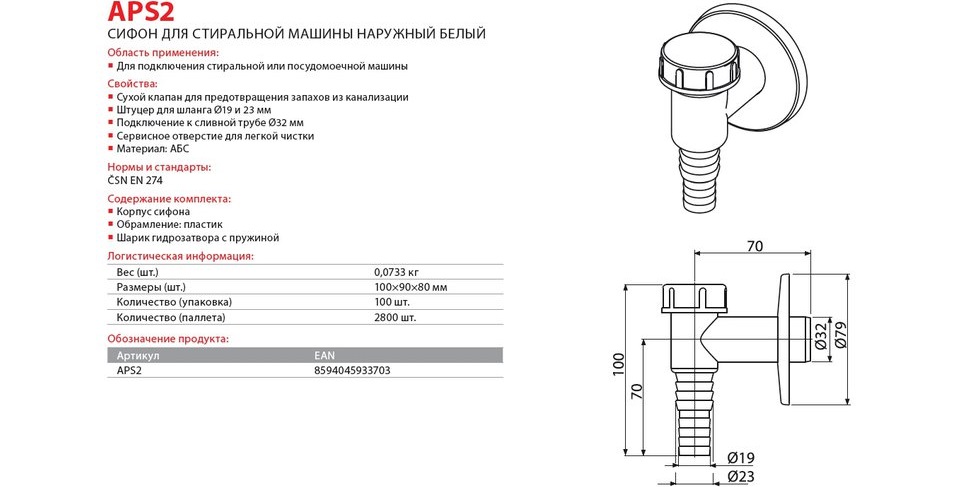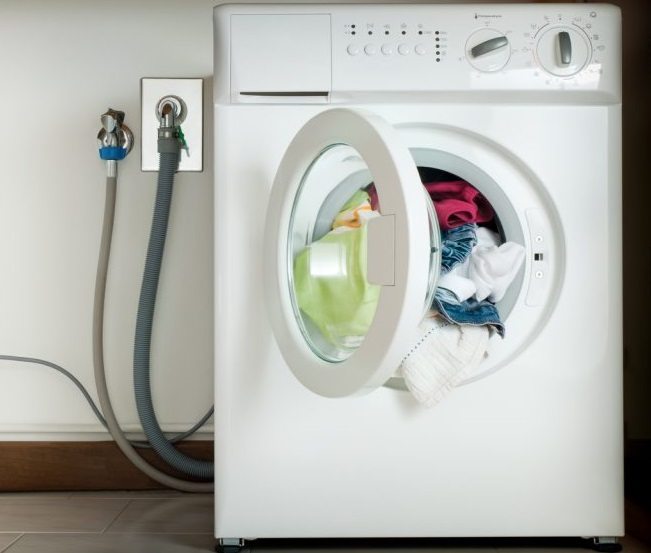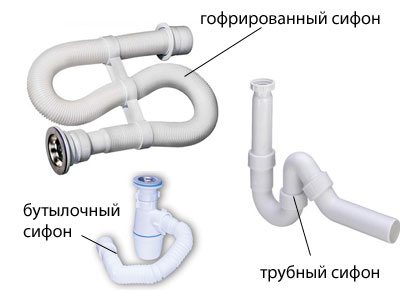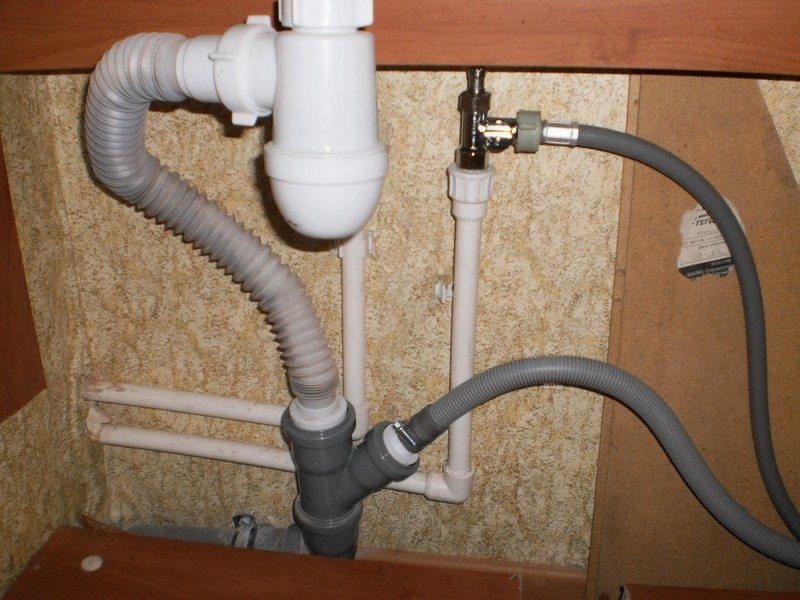Do you need a siphon for a washing machine?
 In order for the automatic machine to function properly, it is important to organize the drainage of water from the washing machine into the sewer according to the rules. The equipment comes with a drain hose, which must be connected to the house communications. Let's figure out whether it is necessary to buy and install a siphon for the washing machine or whether it is better to connect the drainage hose directly to the outlet cut into the pipe. Let's discuss the advantages of using a plastic “knee”.
In order for the automatic machine to function properly, it is important to organize the drainage of water from the washing machine into the sewer according to the rules. The equipment comes with a drain hose, which must be connected to the house communications. Let's figure out whether it is necessary to buy and install a siphon for the washing machine or whether it is better to connect the drainage hose directly to the outlet cut into the pipe. Let's discuss the advantages of using a plastic “knee”.
What is this device for?
It is very important to connect the washing machine correctly so that water can be removed from the system without problems during washing. This is necessary for the proper functioning of the equipment. The siphon was invented and created to ensure uninterrupted drainage of any volume of waste liquid into the sewer pipe. This is a necessary device that:
- prevents the penetration of unpleasant “odors” from the sewer into the apartment, in particular into the automatic machine. This becomes possible due to a hydraulic lock, in other words, a water plug, which completely covers the required section of the corrugated tube;
- prevents clogging of the drain system. When a blockage does form in the structure, you can clean the siphon easily, without much effort;
- filters waste water from large debris. Some siphons are equipped with a filter, which also prevents clogging of the sewer pipe. This addition will help protect valuables that accidentally fall into the drain, for example, a ring, cufflink, or key. The mesh will keep them inside without being “thrown” into the sewer;
- reduces the load on the washing machine pump.Organizing the drainage through the “elbow” significantly extends the service life of the automatic machine pump.

The user receives such benefits by installing a siphon for the washing machine. Today, all machines are equipped with hoses that can easily replace drain fittings. This connection option has one advantage - ease of installation.
For example, it is easy to simply throw a drain hose over the edge of a bathtub or sink and secure it with a special holder. So, organizing a withdrawal will take a maximum of 5 minutes. A little more time consuming is to cut the hose into the pipe. A couple of advantages are countered by many disadvantages of such drainage options.
First, to form a water seal, you will have to bend the drain hose into a U-shape. Because of this, the corrugation will experience constant load, which, over time, will lead to its damage. Cracks will appear on the walls of the sleeve, and the tightness of the drainage system will be compromised. If you abandon the hydraulic lock, there is a high risk of constantly smelling sewer “odors” from the machine.
Secondly, it is not possible to place the drainage hose at a slope (as required by the rules) all the way from the washing machine to the outlet point in the pipe. The sleeve simply lies on the floor, in a horizontal position. This overloads the machine pump, leading to premature pump failure.
Thirdly, directing the hose into a bathtub or sink is unhygienic. Imagine how often waste water with particles of dirt and debris will flow down the walls. You will have to wash the plumbing and remove plaque from it after each use of the automatic machine. In addition, there is a risk that one careless movement will cause the sleeve to fall to the floor, causing flooding of the room.
Also, when the drain hose is very short, users lengthen the hose using additional sections of corrugation and connecting elements. This also increases the load on the washing machine pump. And extra “joints” increase the likelihood of leakage.
It is possible to connect equipment to the sewer without a siphon for a washing machine, but this solution has more disadvantages than advantages.
Which siphon should I take?
Consultants in the plumbing departments can help in selecting drain fittings. You can figure out this issue yourself, because there are no difficulties here. There are only three types of siphons: external, internal and combined.
Each siphon has its own characteristics. To understand which “knee” to choose, it is better to understand in more detail the advantages and disadvantages of each.
External drain fittings are used if the washing machine is sufficiently distant from the sewer pipe. In this case, you can install a structurally simple siphon, which will not be distinguished by its small size and additional technical delights. The main disadvantage of such products is the inability to move the washing machine close to the wall. That is why the outer “knee” is placed when this nuance is unimportant.
Internal siphons are compact; they are mounted directly into the wall, in special recesses. They are used when it is important to place the machine exactly close to the desired surface. Also, such fittings, unlike standard ones, do not spoil the appearance of the bathroom and will fit into any interior. The body of the structure is hidden behind a decorative panel, which is made of plastic or metal. Therefore, after installation, only the compact fitting of the product remains in a visible place.
The disadvantage of the internal siphon is the complexity of installation and the high cost of the product, compared to the external structure. Also, the “elbow” will not be easy to remove and clean if the drain system is clogged.
Combined siphons have several fittings, which allows you to simultaneously organize the connection of drain hoses from different devices.
Apart from this point, the reinforcement does not have any differences from the external one. The fact that the “knee” is equipped with several outputs can be very convenient in certain situations. Using a combined siphon, it is possible not only to connect the hose from the washing machine, but also to organize the drainage of water from the sink and dishwasher. Buyers most often prefer this most versatile product.
Against the "siphon effect"
The siphons offered for sale today successfully resist clogging and the formation of internal traffic jams, but anything can happen. Therefore, when choosing drain fittings, it is recommended to think in advance about additional protection. A siphon for washing machines with a check valve is safer and helps prevent sewage from backing up into the system.
That is why experts advise giving preference to a design equipped with a valve. This will help you avoid:
- returning dirty liquid to the washing machine when the sewer pipe is clogged;
- spontaneous drainage of water during operation of the machine.
A siphon with such protection is especially recommended for installation in apartments on the first and second floors. This is where the likelihood of blockage in the pipes of house communications is higher.
However, before purchasing this type of drain valve, you need to make sure whether your automatic machine is equipped with a check valve.Many modern models of equipment provide such devices. In this situation, it makes no sense to overpay for a special siphon design, but again, if only one washing machine is connected to the “elbow”. If not, a safety valve would be a good idea.
Interesting:
Reader comments
- Share your opinion - leave a comment
Categories
Washing machine repair


For buyers

For users

Dishwasher

















Add a comment